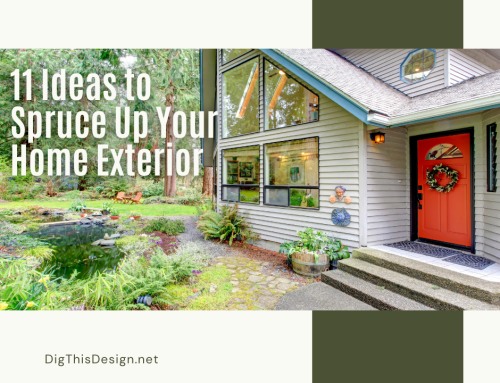A low-maintenance garden is the best way to save time on gardening for your busy everyday life. The proper care and maintenance for your garden are important to preserve the ideal curb appeal for your home. Remember that you need to spend some time to ensure the yard or garden stays in good shape, especially when you have plants with special care requirements.
When you want your garden or yard to look appealing throughout the year, it’ll take time and effort on your part. Sadly, if you lack the time or find the routine too challenging, you might not maintain its beauty. Luckily, some ways can help make yard work manageable.
Here are several quick tips to save time on garden care and maintenance:

1. Plant Self-Sowing Annuals
If you want to minimize time on garden upkeep, you might plant self-sowing annuals. Most annual plants propagate by reseeding, saving you the hassle of planting every year. Remember that annual plants will reseed in any location they want, so it’s a consideration you need to think about.
2 Rethink Your Lawn Design
Some homeowners who take pride in keeping their lawn in pristine shape strictly follow a meticulous maintenance routine. If you lack the time and find the task too burdensome, it might be time to rethink your lawn design to create a low-maintenance garden.
Some options worth considering are expanding your garden beds to reduce the lawn area or hiring a professional to keep your lawn in good shape. You can combine various elements such as shrubs, trees, rocks, or decorative mulch to create low-maintenance beds in your yard. Although hiring a professional will add to your monthly expenses, ensuring your yard is in good shape can be a worthwhile expense.
Another option worth considering minimizing lawn care hassle is switching to artificial turf. Today, it’s continuing to grow in popularity among many homeowners for its low maintenance requirements. If you want to know more about this option, consider checking out reliable sources, such as artificial turf supplier AGL grass and others, as a good starting point.
3. Focus On Mulch
Mulch is a versatile element in any garden or yard. You can use it to dress up your garden while helping keep moisture, insulate the soil, and suppress the growth of weeds. You only need to work on one application during spring.
As the mulch breaks down, the layer will help lessen the number of amendments and fertilizer to add to the soil.
4. Grow Plants with The Same Care Requirements
Another way to make garden maintenance manageable is to grow plants with similar requirements. When you have plants that prefer a shady area, plant them together while grouping plants that require direct sunlight in the right location. Alongside helping your plants to thrive better, it makes caring for them easier to handle.
5. Choose Plants That Require Minimal Pruning
When you have a yard or garden, pruning and dead-heading are crucial tasks if you don’t want a messy outdoor space. Choose shrubs that need little or no trimming to cut down the time you’ll spend on these time-consuming jobs. You may also choose herbaceous plants that bloom their own or have lengthy blooms that don’t require dead-heading.
6. Make Use of Time-Based Fertilizers
When you have several plants in your yard, the fertilizing process can take time and effort. If you lack time to spend all day fertilizing your garden, it might be time to apply time-based or slow-release fertilizers to create a low-maintenance garden.
7. Perform Weeding at The Right Time
Removing weeds is a common task when you have a garden. The right time to weed is when the soil is moist, usually after a rainy morning. Doing so will allow you to pull stubborn weeds out from the ground easily. Turn the soil upside down with a shovel if the weeds are tiny and tangled.
8. Consider Winter Proof Containers
When you’re having a hard time moving several plant containers as the cold season arrives, it might be time to consider plant containers that can endure the weather elements, especially those living in areas with harsh winters. Concrete or high-quality fiberglass pots are good options that can tolerate the elements.
9. Hold Pruning Until Later in The Season
Another timesaving gardening tip is to set aside pruning until later in the season. It’s best to wait until the growing season is over and prune all your plants altogether. You’ll prune your plants once a year instead of twice.
10. Try to Compost as Much as Possible
Make it a priority to add compost to your planting beds every year. It plays an important role in building healthy soil that’s more resistant to disease. Compost also helps the soil hold the moisture it needs while helping shed excess moisture after heavy rains. Since compost improves soil fertility naturally, you no longer need to fertilize.
Final Thoughts
Keeping your yard or garden in good shape will require a routine, especially if you want to maintain an attractive curb appeal. Although creating a low-maintenance garden will help you save time on caring for your plants. Even if you set aside time to tackle watering, pruning, mulching, fertilizing, and others, there are ways to make the routine manageable. Luckily, these quick tips on garden maintenance will help you save time and effort while ensuring your garden or yard stays healthy and attractive throughout the year.
Other Posts You Might Enjoy:
4 Ways to Maintain Your Trees for Years of Enjoyment
3 Tips for a Beautiful Yard and Garden Free of Weeds





